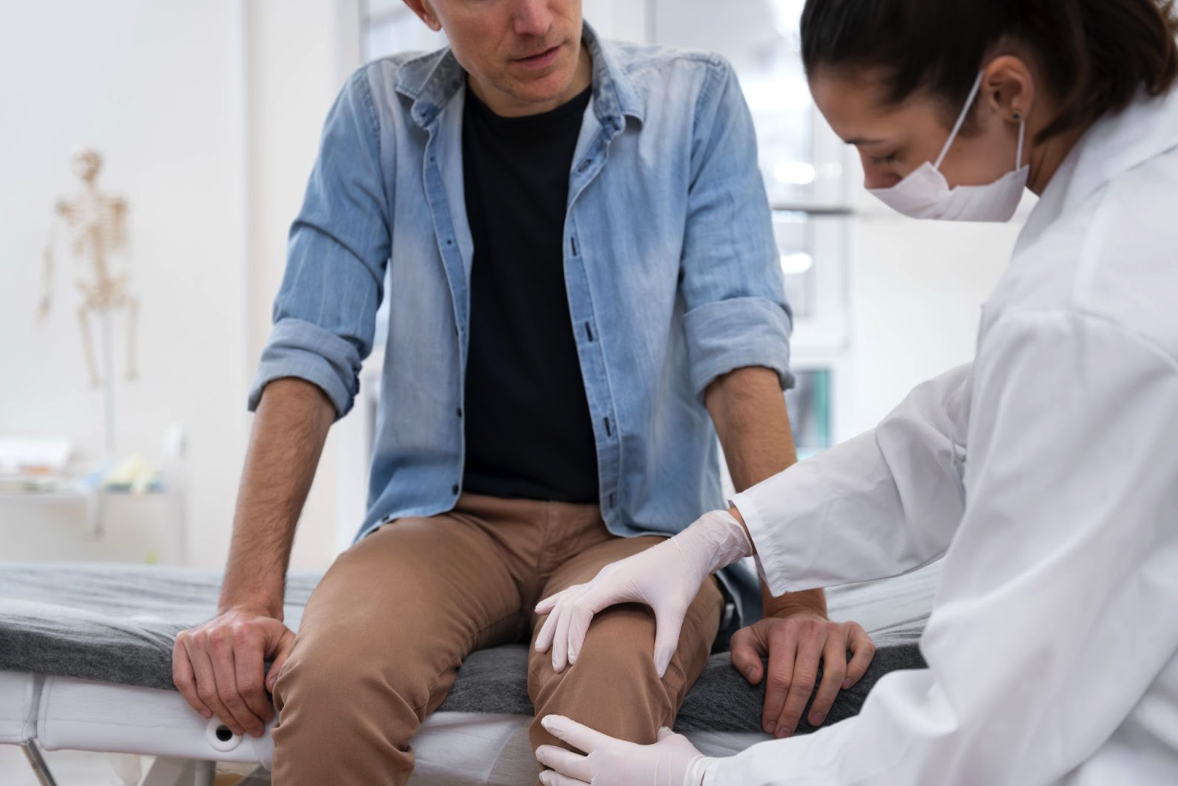Knee replacement is a common and highly effective surgical procedure for individuals suffering from chronic knee pain, stiffness, or limited mobility due to arthritis or injury. Whether it’s a total knee replacement or the more advanced robotic knee replacement, the goal is the same to restore function, relieve pain, and improve quality of life. With proper care and rehabilitation, most patients return to normal activities within months.
This guide covers everything you need to know about knee replacement surgery, including what it involves, the pros and cons, knee replacement recovery time, and tips for post-surgery exercises.

Knee replacement also known as knee arthroplasty is a procedure where a damaged or diseased knee joint is surgically replaced with artificial components. It’s often recommended when non-surgical treatments like medications, physical therapy, and lifestyle changes fail to relieve chronic knee pain.
The most common reason for knee replacement surgery is osteoarthritis, a condition that causes cartilage wear and joint inflammation. Other causes include rheumatoid arthritis, post-traumatic arthritis, and knee deformities.
There are several types of knee replacements:
Knee replacement surgery is typically performed under spinal or general anesthesia. The procedure involves:
The entire procedure usually lasts 1–2 hours. Patients often begin moving their knee the same day or within 24 hours post-surgery, depending on their condition and the surgical approach.
Robotic knee replacement is becoming increasingly popular due to its enhanced accuracy. In Robotic Assisted Total Knee Arthroplasty, the surgeon uses a robotic system for real-time guidance, which improves implant placement and can potentially lead to faster recovery and better outcomes.
While knee replacement is generally safe and effective, it’s important to understand the risks and disadvantages of knee replacement surgery before deciding to proceed:
It’s essential to discuss these factors with the Best Orthopedic Doctor in Bangalore to determine whether you’re a suitable candidate for the procedure.
Knee replacement recovery time varies from person to person but generally follows a pattern:
Following your surgeon’s advice and sticking to a rehabilitation plan are key to a successful outcome.
After surgery, knee replacement exercises are vital to ensure a strong, flexible, and functional joint. Here are some commonly recommended ones:
Patients usually work with a physical therapist for the first few months. Performing these exercises regularly speeds up recovery and reduces the risk of complications.
Robotic knee replacement has gained popularity for its precision and customization. In Robotic Assisted Total Knee Arthroplasty, the surgeon uses a robotic arm to guide the placement of the implant based on a detailed 3D model of the patient’s knee.
Benefits include:
If you’re considering knee surgery, ask your orthopedic specialist if you’re a candidate for robotic-assisted surgery.
Surgery isn’t the first step. However, knee replacement may be recommended if you experience:
Discussing symptoms with the Best Orthopedic Doctor in Bangalore can help determine if surgery is the right next step.
Successful outcomes depend not just on the procedure, but on where and how it’s performed. If you’re looking for reliable care, choose the Best Orthopedic Hospital in Bangalore. These facilities offer:
Getting treated by the Best Orthopedic Doctor in Bangalore ensures you’re in expert hands from consultation to recovery.
Knee replacement surgery is a transformative solution for those struggling with chronic knee pain or mobility issues. Whether it’s a total knee replacement or the advanced robotic assisted total knee arthroplasty, the goal is the same: restore comfort, motion, and confidence in your everyday movements.
Understanding the procedure, being aware of the disadvantages of knee replacement surgery, committing to rehab, and choosing the right medical team are all key factors in ensuring long-term success.
If you’re ready to regain your mobility and improve your quality of life, consult the Best Orthopedic Doctor in Bangalore at a trusted facility. With the right guidance, surgery, and recovery plan, a pain-free life is within reach.
Most people recover within 6 to 12 weeks for basic daily activities, but full recovery—including regaining full strength and flexibility—can take up to 6 months or more, depending on age, health, and rehab consistency.
Yes. Some potential disadvantages include infection, blood clots, limited range of motion, and in rare cases, persistent pain. Implants may also wear out over time, sometimes requiring revision surgery. However, most patients experience significant pain relief and improved mobility.
Robotic knee replacement uses a robotic system to assist the surgeon during the procedure, allowing for more precise implant positioning and less soft tissue damage. This often results in faster recovery and better long-term joint function compared to traditional surgery.
3 Mins Read
Categories: Orthopedics
Knee Replacement: Surgery Details & Recovery is available for appointments. Please fill the below form to book an appointment.
Unlock the door to exceptional healthcare, book an appointment with SPARSH Hospital and let your journey to wellness begin.